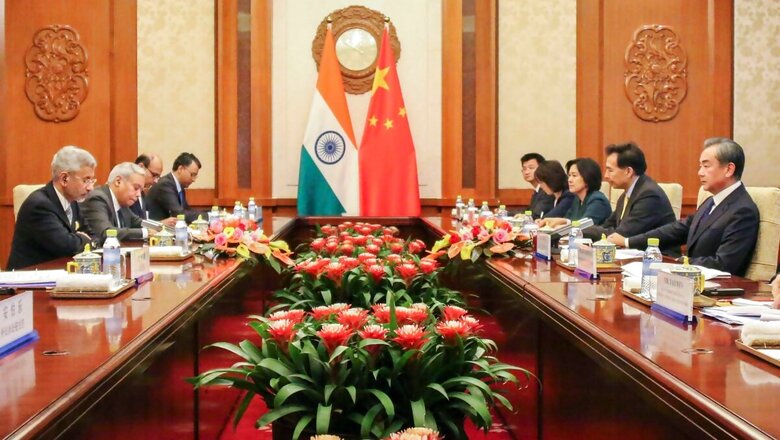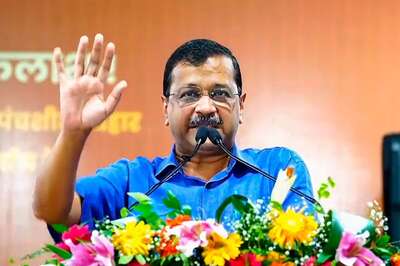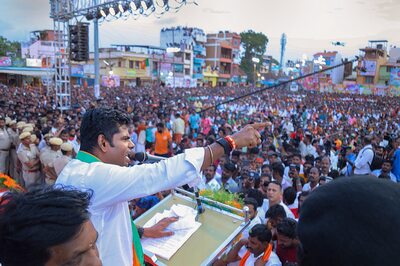
views
External Affairs Minister S Jaishankar held a bilateral meeting with Chinese counterpart Wang Yi in Moscow on Thursday amid a massive spike in border tensions in eastern Ladakh, triggered by fresh face-offs between the two armies.
In meeting which lasted more than two hours, sources said Jaishankar stressed on the need to maintain peace and tranquillity in the region, and reiterated that Indian forces never tried to change the status quo ante along the Line of Actual Control.
Jaishankar and Wang are in Moscow to attend a Shanghai Cooperation Organisation (SCO) meeting. In a virtual press conference before the meeting, the Ministry of External Affairs reiterated India’s position that it is committed to resolve the current situation through peaceful negotiations.
“Both India and China are in regular touch through diplomatic and military channels to resolve the situation. This was the consensus when the two defence ministers met,” MEA spokesperson Anurag Srivastava said.
Defence Minister Rajnath Singh had held talks with his Chinese counterpart General Wei Fenghe on the margins of another SCO meet in Moscow last Friday, but apparently the meeting did not yield any tangible outcome.
Shortly before Jaishankar’s meeting with Wang Yi, China’s state-owned Global Times said the bilateral talks were the “last chance” for a peaceful resolution.
The Indian Army, meanwhile, has further bolstered its dominance over a number of strategic heights overlooking key Chinese-held positions around Pangong lake area in eastern Ladakh even as brigade commanders and commanding officers of the two militaries held separate talks to cool tensions in the region.
Quoting sources, news agency PTI said additional reinforcements have been made in hill tops and strategic locations around Pangong Lake to keep a hawk-eye vigil on Chinese-held position of Finger 4.
The mountainous spurs in the area are referred to as ‘Finger’. China has been holding onto Finger 4 to 8 on the north bank of Pangong Lake, reports said. The Indian Army has occupied several key heights in the strategically located Rezang-La and Reqin-La areas on the southern bank of the lake since the end of August.
Reports said the two armies held separate talks at brigade commander-level as well as between commanding officers in the general area of Chushul. “The focus was to bring down the temperatures,” said a source.
Tension escalated manifold in eastern Ladakh following fresh face-offs between Indian and Chinese troops in Mukhpari area of Rezang-La ridgeline on Monday evening. The Indian Army on Tuesday said Chinese troops attempted to close in on an Indian position near the southern bank of Pangong lake in eastern Ladakh the previous evening and fired shots in the air, a first such instance of bullets being used along the LAC after a gap of 45 years.
The Army said this in a statement after the Chinese People’s Liberation Army (PLA) late on Monday night alleged that Indian troops crossed the LAC and “outrageously fired” warning shots near the Pangong lake. The incident of Monday evening was considered serious as the previous instance of shots being fired at the de-facto border was in 1975. Provisions of an agreement of 1996 and another signed in 2005 mandate the two sides not to use firearms during any confrontation.




















Comments
0 comment